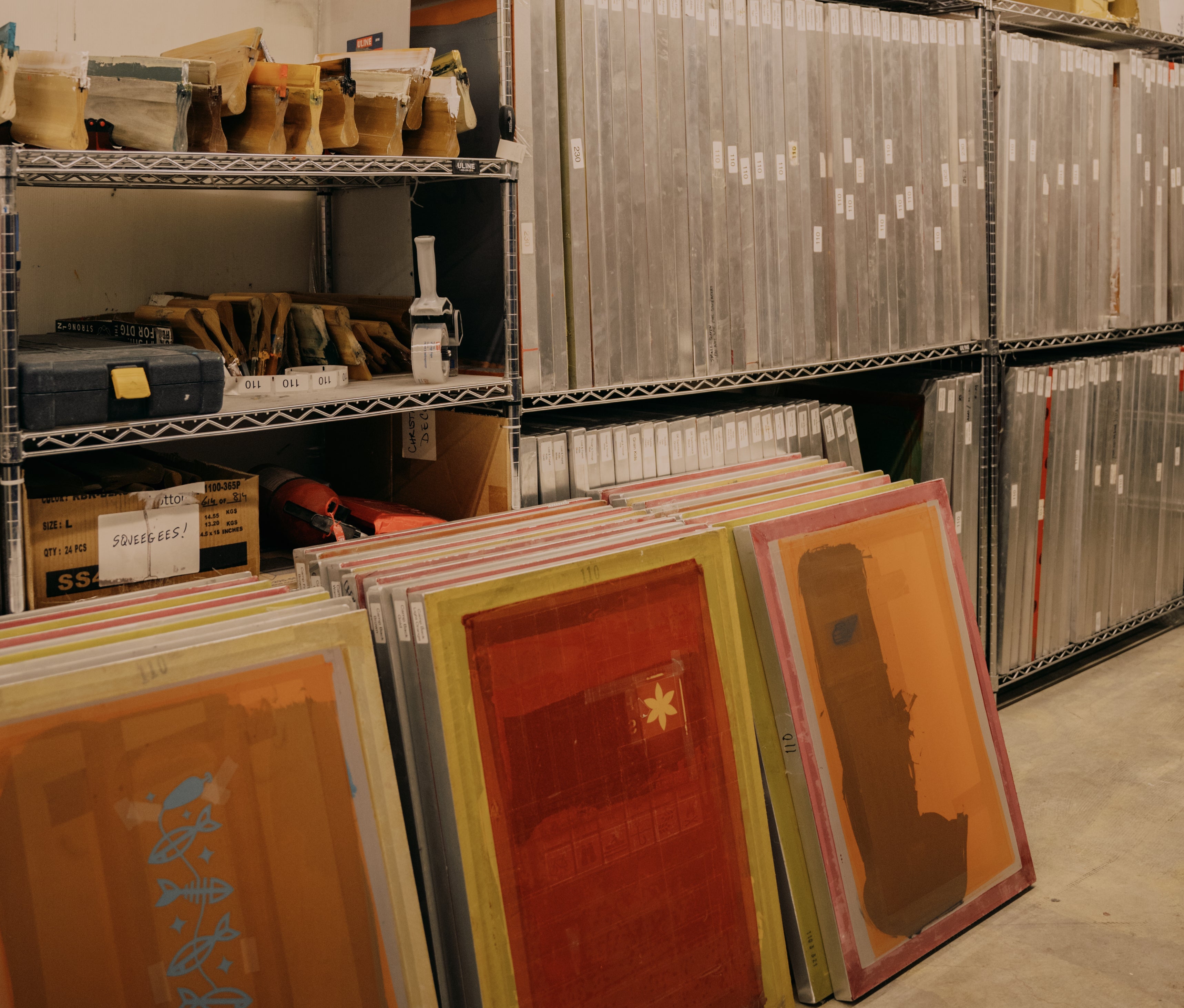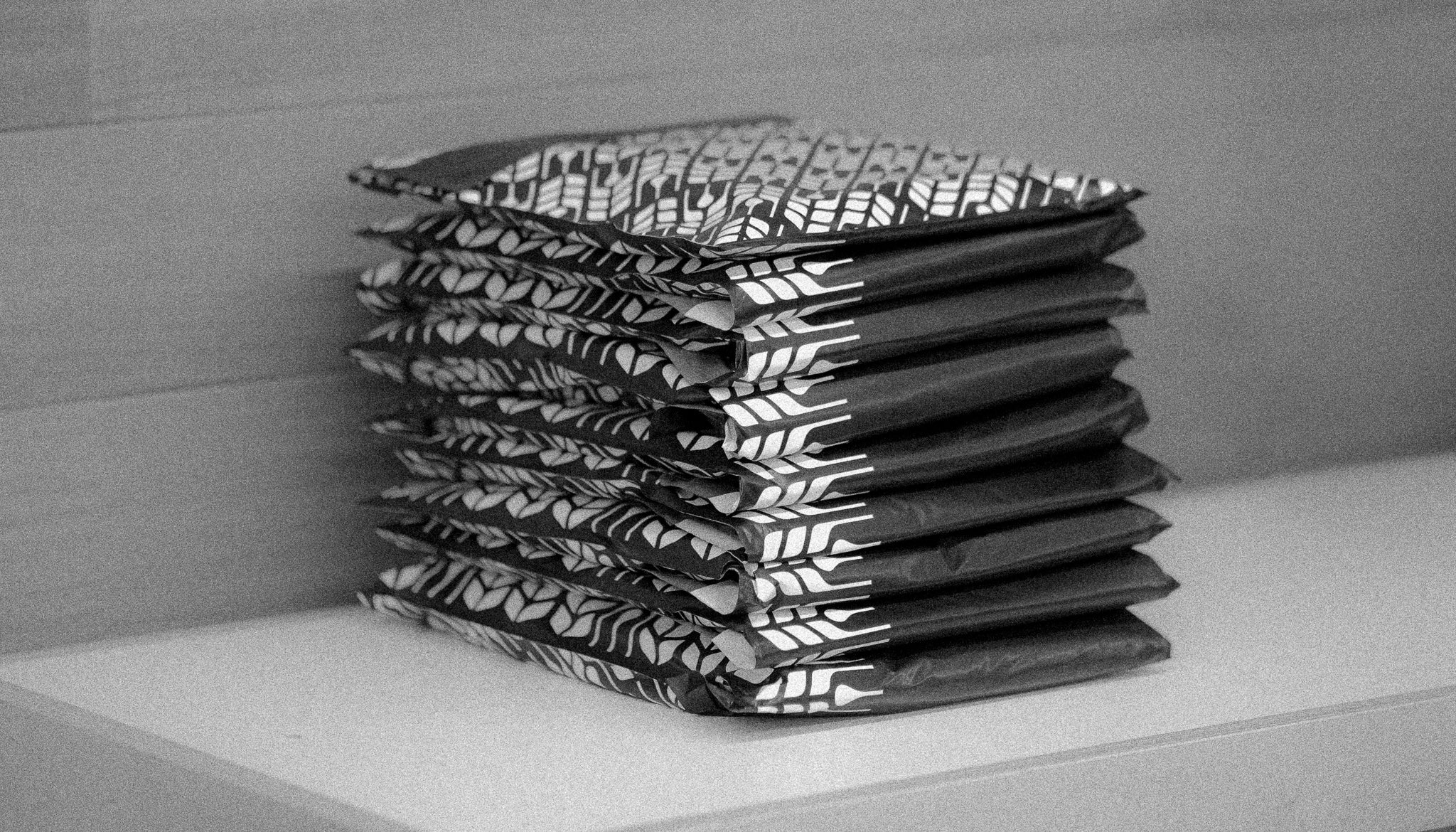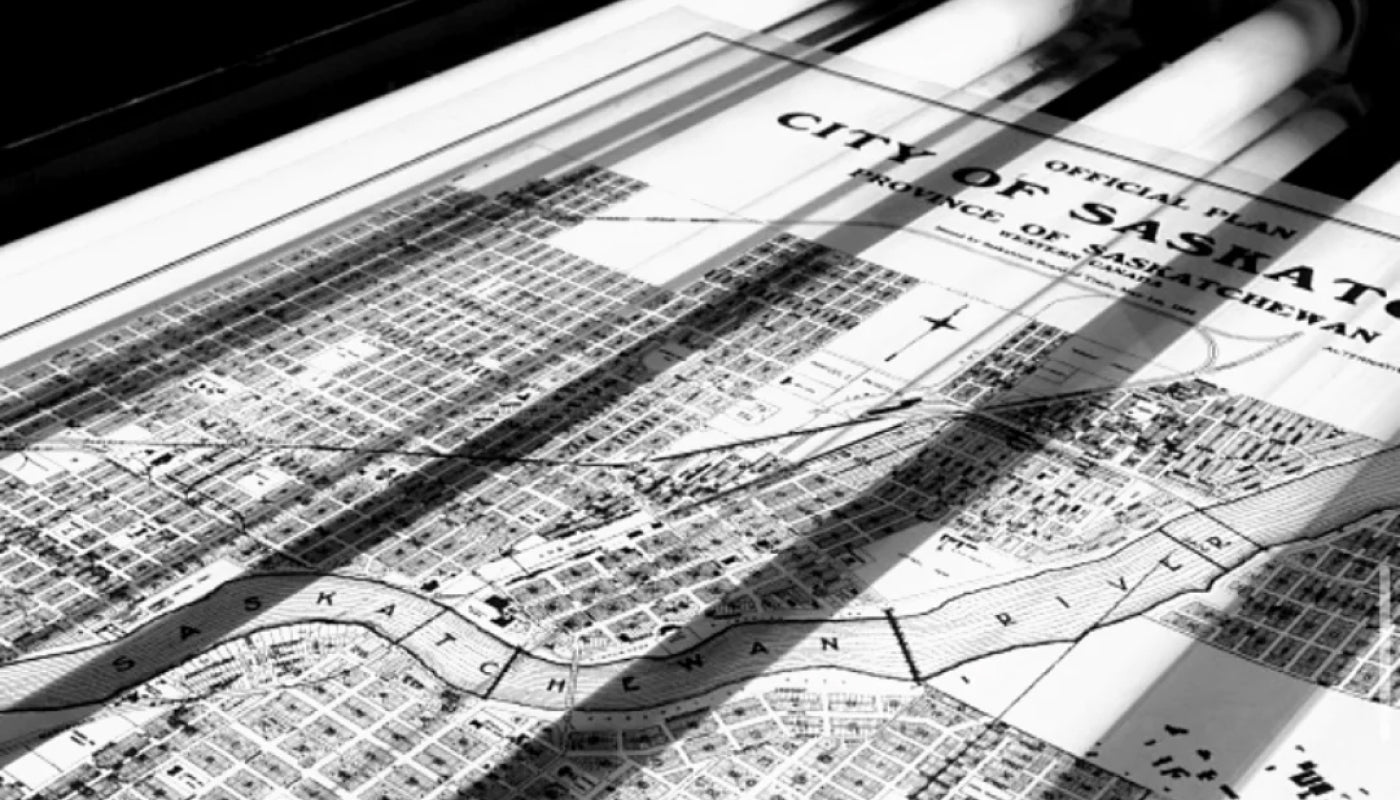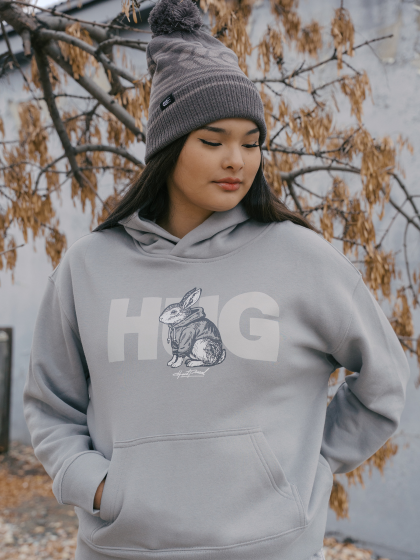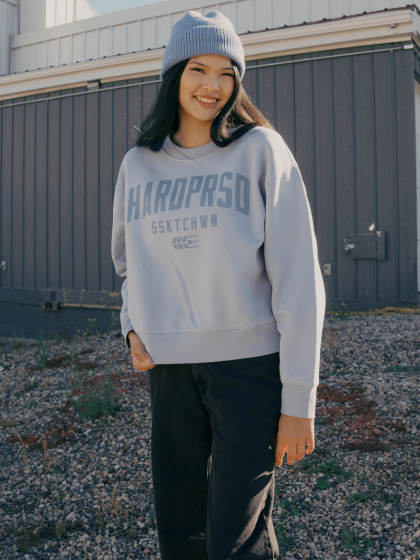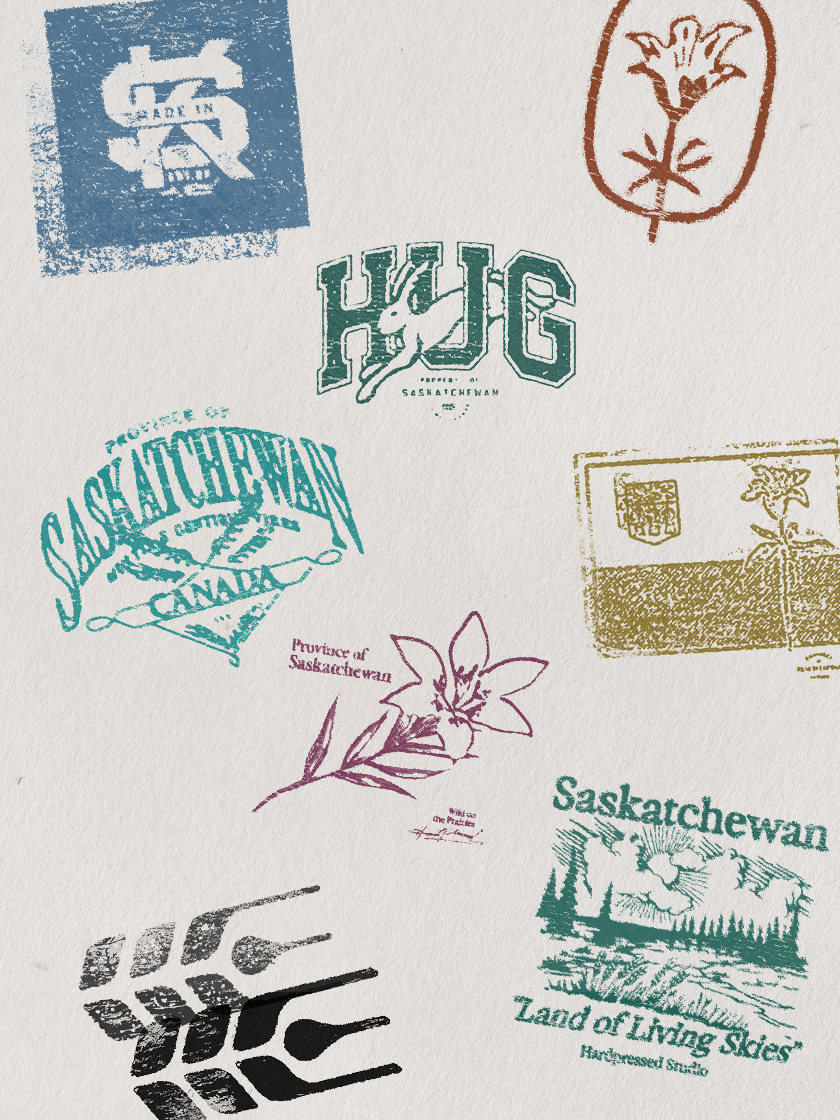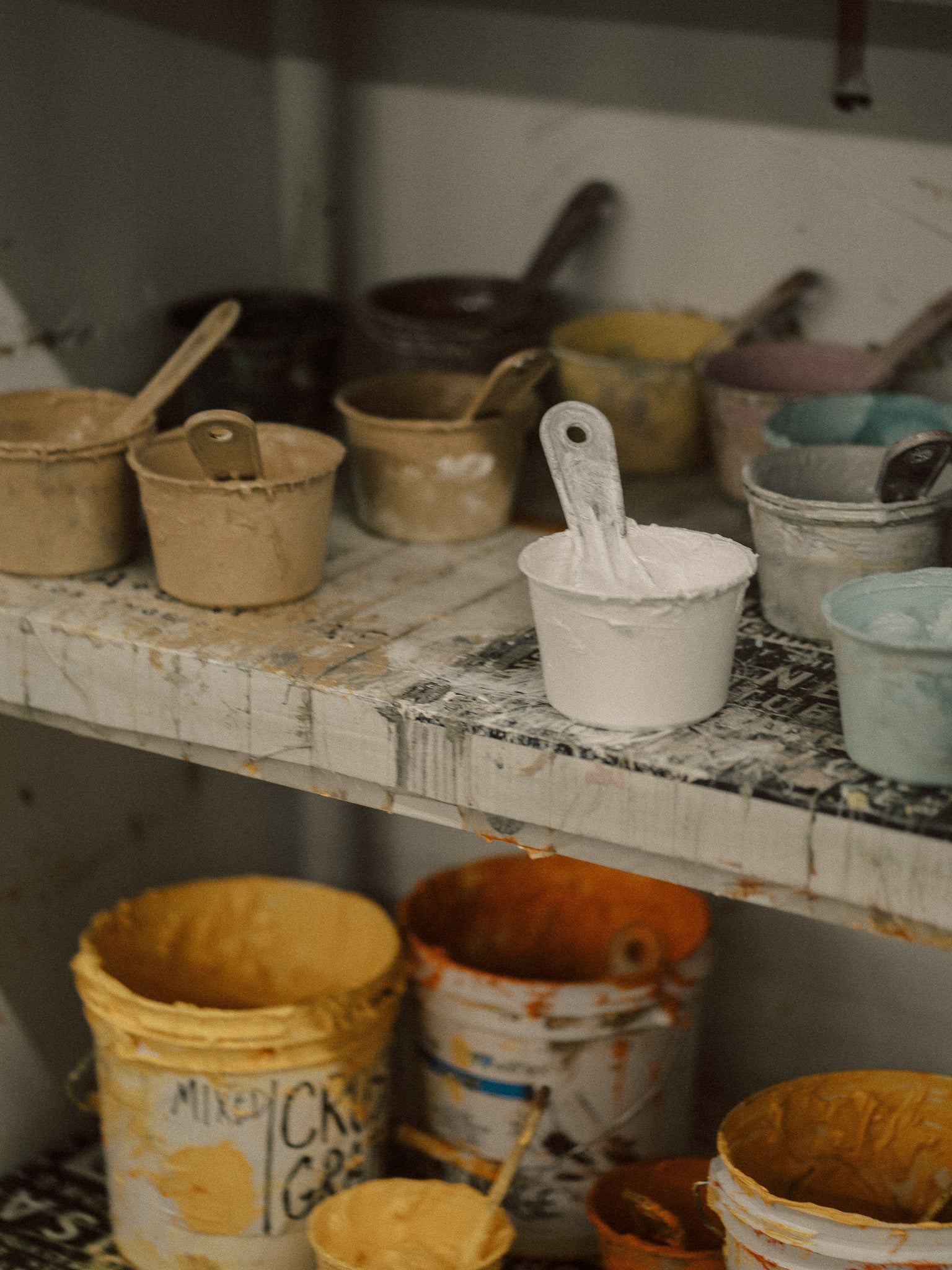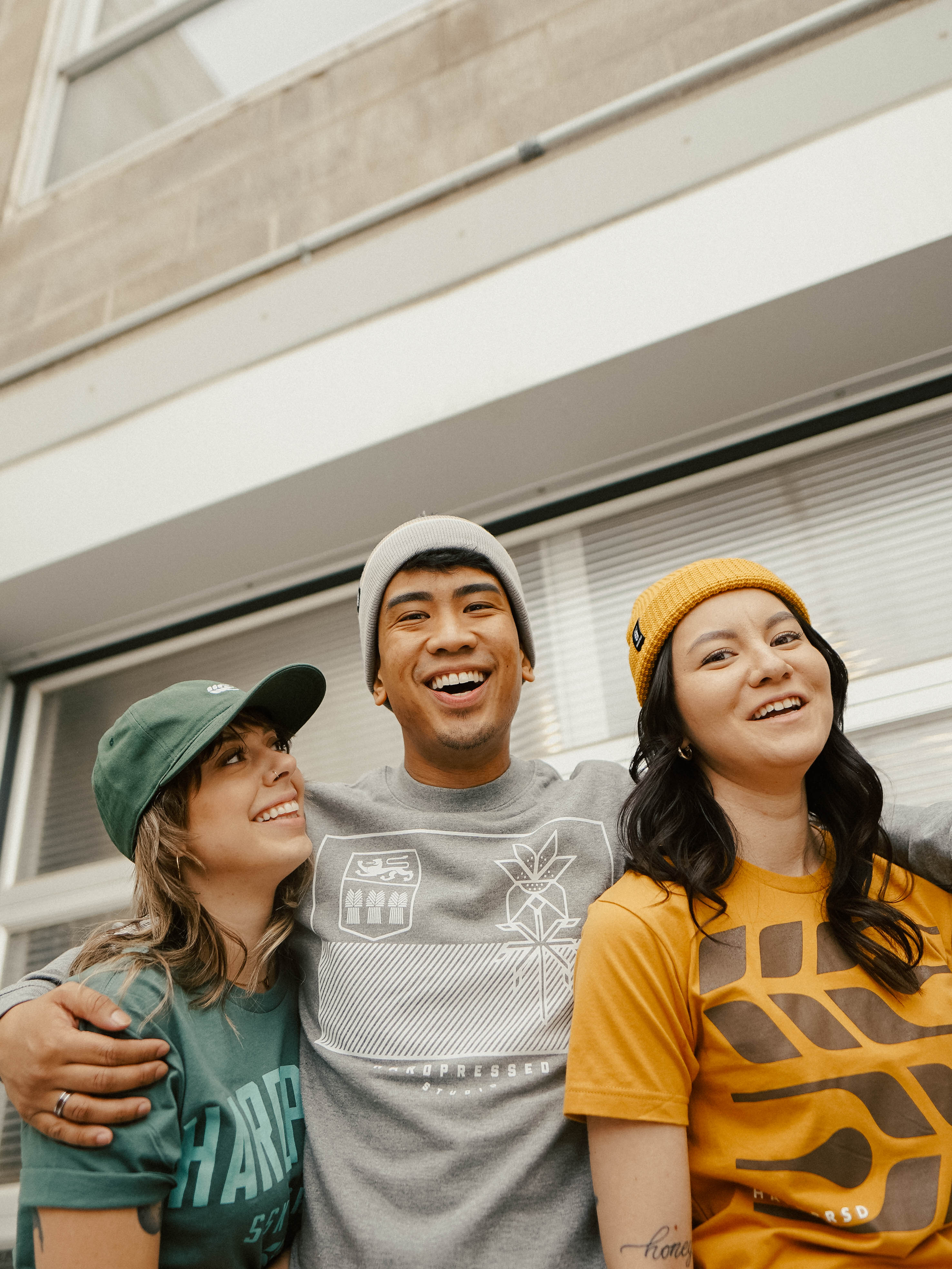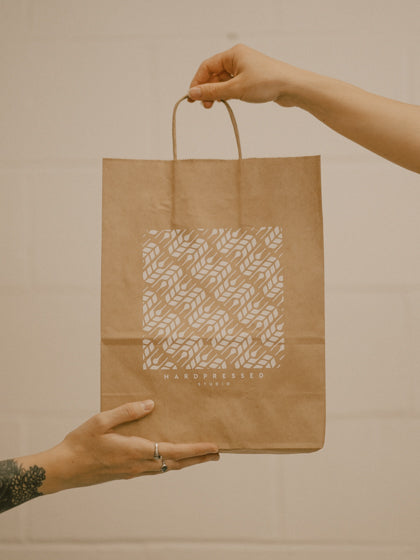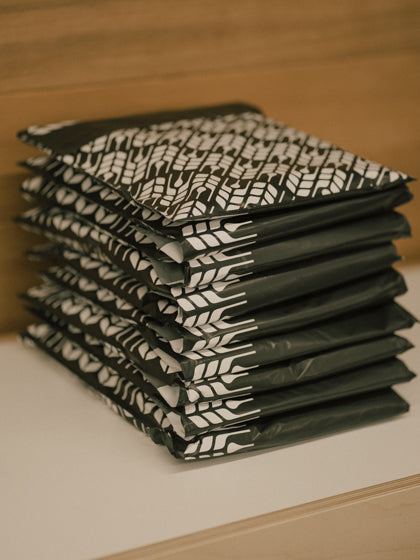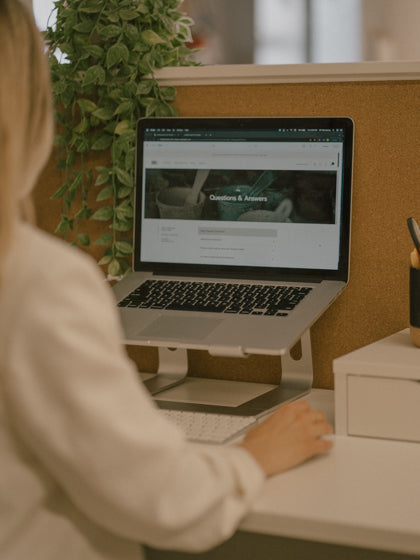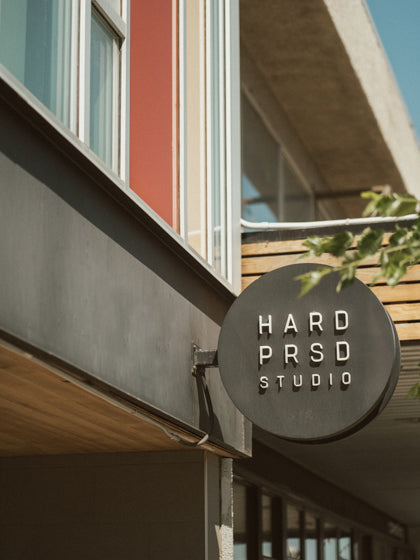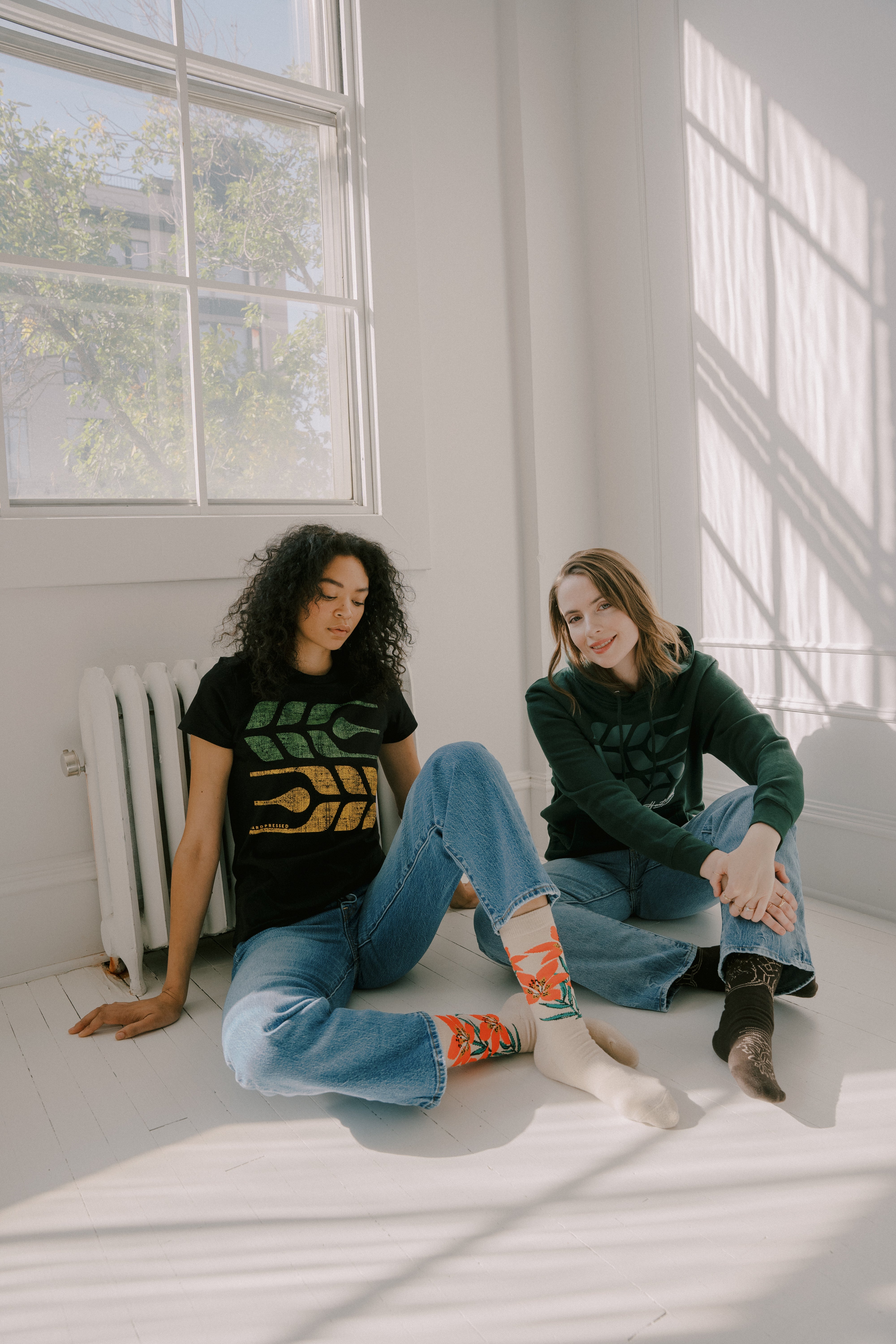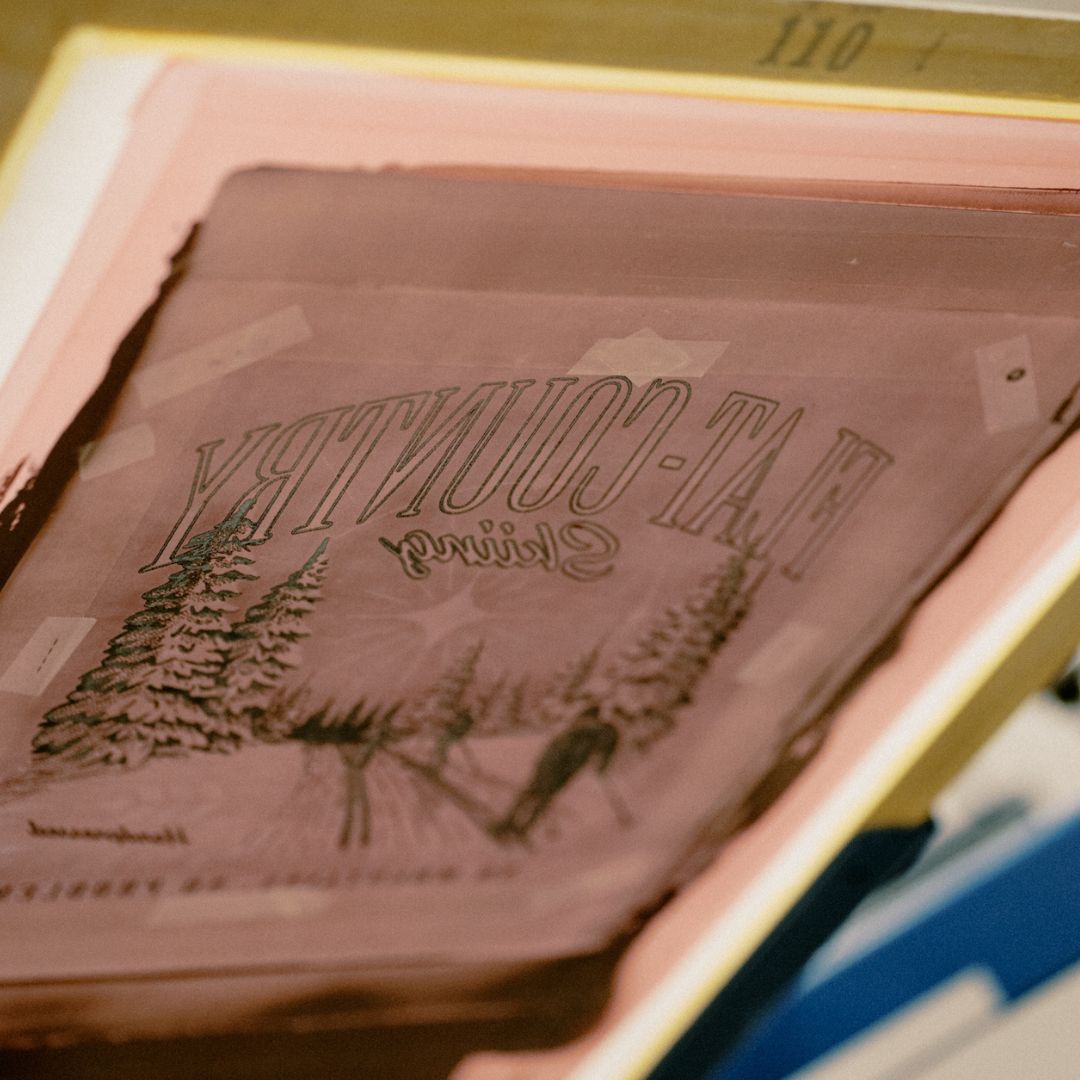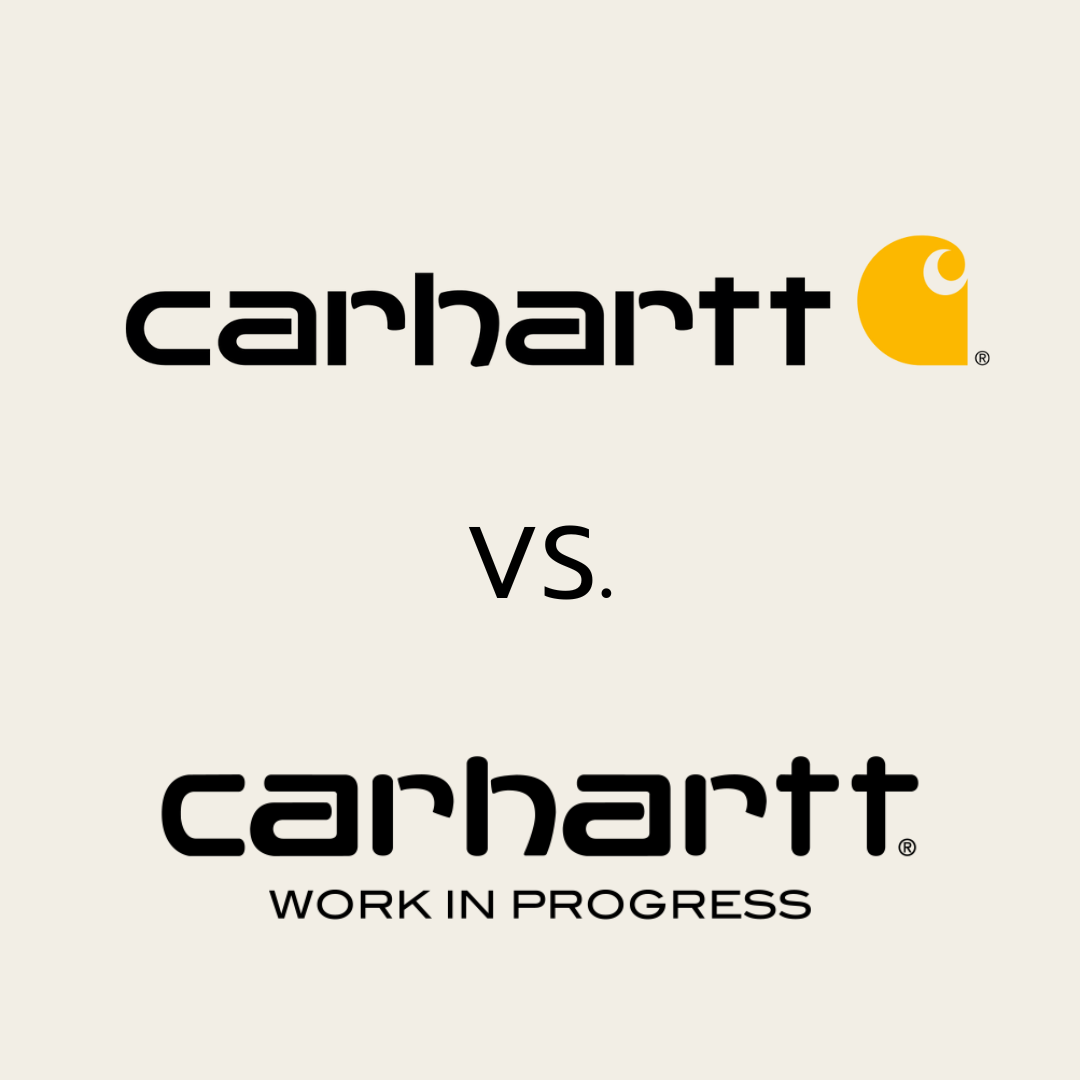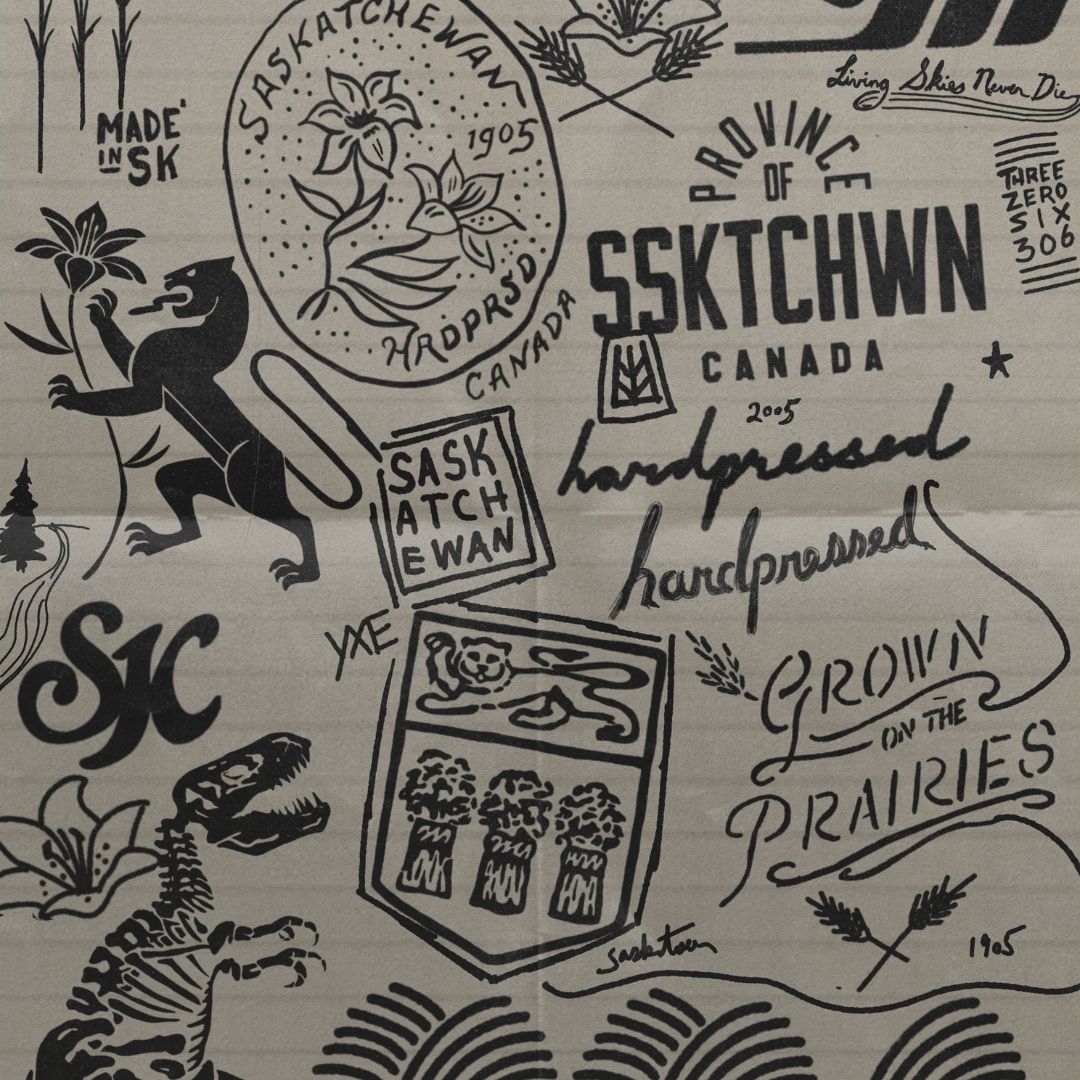Have you ever wondered what goes into making a Hardpressed t-shirt? Well, we might make it look easy - but there are weeks, or sometimes months worth of work that goes into a product release before it comes to fruition. Part of that prep work includes each of our garments being printed in-house by our screen printers. Today, you'll get a look into a day in the life of a Hardpressed screen printer - delivered to you straight from our inventory manager & seasoned screen printer, Jared Beattie.

What was the first Hardpressed design you printed?
I can remember two of the earliest designs. The Kids Tri-Grey Made in SK tee - A classic! Also, the now long-discontinued Bridge Tee. I’m not even sure that’s what it was called, it was so long ago. It was a view down the center of the Victoria (Traffic) Bridge.
What is the best part of the printing process in your opinion?
When you’re working out the process for a new design, and after various colour and placement trials, the first time everything comes together in its final form and you get that first immaculate print, there’s certainly a great feeling of satisfaction in that.
More generally, once your process is determined and setup is complete, getting into the rhythm and flow of printing can be a zen-like or even meditative mode.

What makes Hardpressed graphic tees different from other local apparel companies?
Right from the initial step, the process is exact and precise. Our designers work hard to achieve a high level of professionalism and, as always, we rely on the beauty and inspiration our province provides. I think there is a lot of appeal to the fact that we proudly represent where we come from. That resonates with our customer base who also want to represent their pride in the beauty of this land.
Does the screen printing process at Hardpressed differ from other print shops in any way?
By and large, the process remains the same. We do have some time-saving and convenience factors built into our production model. A lot of custom printing requires preparing a number of screens, running a print job to completion once, washing out or “reclaiming” screens, then restarting the process all over again for the next project. Since we have more of a brand line to maintain we can store and re-use screens over and over. This greatly reduces the amount of setup time required for single jobs. Screens can get damaged and wear out with repetitive use, but in general, a well-prepared screen can be used daily for weeks, months, sometimes even years. We're looking at you, Map Tee, Gold Lily & Bridge List, Hardpressed designs that have stood the test of time!
How does screen printing differ from other forms of printmaking?
To my understanding, some other forms use various chemicals or treatments to etch plates which then get inked individually. One of the main benefits of screen printing is once your screens are prepared and your project is set up, you can work continuously without re-inking a transfer plate, or having a long process to produce only single items.

What type of garment is the most difficult to print on?
There are various considerations. Certain garments are produced through a dying process. In some cases, the garment colour can “bleed” into the ink if overheated or otherwise unprepared. This is called “dye migration” and usually appears as spotty, patchy colours and consistency. Various fabric blends are more or less likely to migrate depending on their fabric content. Some fabrics will shrink or even melt if care is not taken to use a precise level of heat and time of exposure.
Oftentimes we are printing on sleeves, or pant legs or various other items and garments that require a different setup or process. Each presents its own challenges, but preparation and practice make almost anything possible.
If you could re-design the screen printing process, what’s one change you would make?
I have to say that I do sometimes find the subtleties and intricacies of colour mixing a bit taxing. Manually adding various colours and swirling ink in cups repetitively as you make tiny adjustments to achieve the correct tone or shade can be torture on your hands and wrists as it’s a pretty gooey, thick consistency. It can also get extremely messy if you are not careful!
I would like to see a system similar to the way paint is mixed, where you can precisely control the amount of ink or pigment dispensed into your blend using a controlled, mechanical method.


Why does Hardpressed continue to print-in-house rather than out-sourcing?
The greatest benefit is complete control over the process and outcome. If changes, problem-solving, or communications are needed, our entire production process resides under one roof. The Creative, Production, Marketing, and Retail departments are all within steps of each other. There is a lot of back-and-forth communication that goes into honing every last detail of the way our garments are designed, produced, and presented.
How many products are printed within a day? A week?
This comes down to the complexity and colours needed. A single colour print on the automatic press can be produced almost as fast as we can load and unload the machine. In other cases, we may need to set aside multiple days for garments that have multiple colours or print locations. Our annual Camp Series design is a good example of a fairly time intensive product. There are four print locations, (front, back and both sleeves) and each is at least 2 to 3 colours, of multiple layers each.

In general we can produce hundreds of items a day when needed. Our monthly production often numbers in the thousands.
Who is a part of the production team at Hardpressed? How many people are involved in the process?
We employ two full-time printers. They are also responsible for the maintenance of our print floor machinery, and all screen preparation and reclaiming. There are also various supply, storage, and organization tasks that require attention from time to time.
Another role is focused on the analytic and planning portion of production. We use a variety of methods to best anticipate and project future demand and top up existing products. Sales and supply are considered daily before generating print job requests, monitoring supply and recommending re-ordering of necessary garments. Meticulous records are kept of sales figures, production statistics and our specific print methods.
What helps make the time pass when working on a big batch of prints? Does the production team listen to music? Podcasts? Get into debates?
Our production staff tends to use several methods to accompany our work. We variously use music, podcasts, audiobooks, or conversation to occupy our time. General interests include true crime, video games, comic books, sci-fi, fantasy and horror films/television, current events, internet culture, and tabletop role-playing games.


What would a fly-on-the-wall witness on a regular day in the print shop? What are the common sounds? Smells? Sights?
It is not a quiet room. The automatic press beeps, clunks, swishes, and whooshes, punctuated by an air compressor chugging and humming. Manual presses click and whirr. Printers gab, slide squeegees, and clatter tools and supplies. Screens clank, water splashes and sprays, and boxes thump.
There are some chemicals in use, mostly in the use of screen cleaning and maintenance, but thankfully none are extremely scented or toxic.
Our walls are decorated with past poster designs and large marketing banners from past years.

